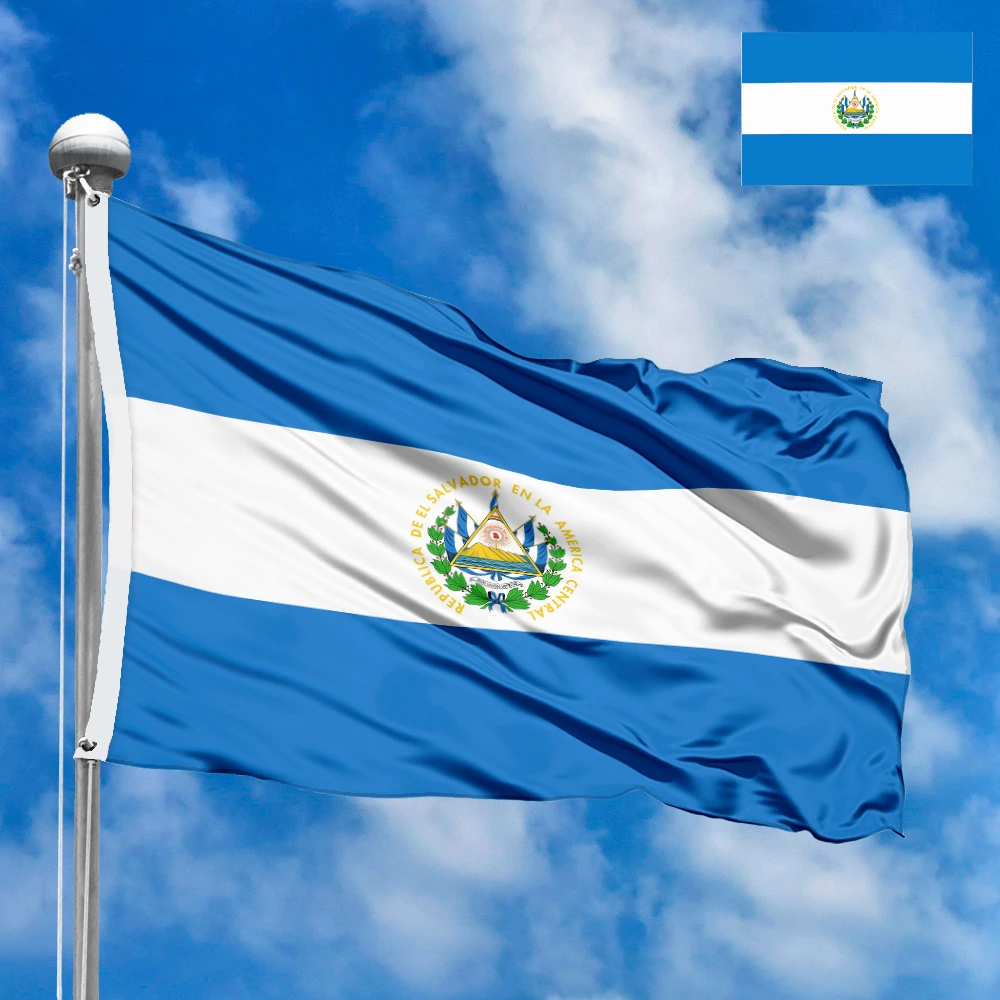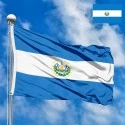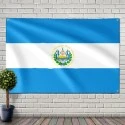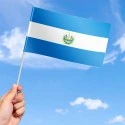The national flag of El Salvador is a powerful emblem of a nation's history, aspirations, and deep-seated identity. Its design is both simple and profoundly symbolic, telling the story of a country with strong ties to its Central American heritage, a commitment to peace, and a vision for the future. The flag, with its distinctive blue and white stripes and complex coat of arms, stands as a testament to the nation's journey to independence and its enduring values.
A Detailed Look at the Flag's Design and Symbolism
The flag is based on the historic banner of the United Provinces of Central America. It consists of three horizontal bands of equal width. The top and bottom bands are a vibrant cobalt blue, and the central band is white. The flag used by the government and official entities features the national coat of arms in the center of the white stripe. A civil flag, for use by private citizens, exists without the coat of arms, but the version with the emblem is the most recognized and powerful symbol.
Each color of the flag carries a specific and significant meaning:
-
Blue: The two blue stripes represent the vast Pacific Ocean and the Caribbean Sea that flank the Central American isthmus. This not only signifies El Salvador's geographical location but also the sky, symbolizing a boundless future and the hope of the Salvadoran people. This color is a reminder of the nation's stunning natural beauty and its connection to the wider world.
-
White: The central white stripe stands for peace, purity, and solidarity. It represents the land of El Salvador, the "land of volcanoes," situated between the two great oceans. The color symbolizes the nation's commitment to internal harmony and its desire for peaceful relations with other countries. It is a visual representation of the national ideal of a tranquil and just society.
The Intricate Coat of Arms
The national coat of arms, prominently displayed on the state flag, is a masterclass in symbolism, rich with historical and ideological meaning. It is an equilateral triangle with a golden-amber outline, representing the three branches of the country's government: the executive, legislative, and judicial.
Inside the triangle, a scene unfolds:
-
Five Conic Volcanoes: Rising majestically from the sea, these five volcanoes represent the five former member states of the United Provinces of Central America: El Salvador, Guatemala, Honduras, Nicaragua, and Costa Rica. They symbolize the fellowship and shared heritage of these nations.
-
A Red Phrygian Cap: Placed on a staff above the volcanoes, this cap is a powerful, internationally recognized symbol of liberty and freedom. It signifies the hard-won independence of the nation.
-
A Golden Sun: Behind the cap, a radiant sun with beams of light illuminates the scene, representing the glory of the nation's ideals. Within the sun, the date of independence, 15 de Septiembre de 1821, is inscribed, commemorating the moment El Salvador broke free from Spanish rule.
-
A Rainbow: An arching rainbow sits above the sun, a biblical symbol of peace and hope. It signifies the promise of a peaceful future and a covenant with the people.
-
Five Flags: Behind the coat of arms, five blue and white flags of the Federal Republic of Central America are proudly displayed. These flags symbolize El Salvador's enduring hope for the reunification of the Central American republics. They represent a historical and ideological connection that Salvadorans continue to cherish.
-
Laurel Wreath: The entire emblem is encircled by a laurel wreath, the traditional symbol of victory and glory. This wreath is uniquely divided into 14 distinct parts, each representing one of the 14 departments of El Salvador, symbolizing the unity of the nation's administrative regions.
-
National Motto: Below the wreath, a golden scroll bears the national motto: "DIOS UNIÓN LIBERTAD" ("God, Union, Liberty"). This motto encapsulates the core values of the Salvadoran people.
History and Adoption
The history of the Salvadoran flag is a tale of shifting political alliances and a return to cherished ideals. The current design is a direct descendant of the flag of the United Provinces of Central America, a federal republic that existed from 1823 to 1839. After the dissolution of this federation, El Salvador temporarily adopted a different flag in 1865. This flag was distinctly different, featuring red and white stripes with a red canton containing nine stars.
However, a strong sense of Central American identity and the desire for reunification persisted. This led to the legislative decree on May 27, 1912, which officially reinstated the blue-white-blue tricolor. The new flag was publicly hoisted for the first time on September 15, 1912, to commemorate the 91st anniversary of independence. This move was a powerful statement, signaling El Salvador's return to its historical roots and its commitment to the legacy of the Central American union. The design has undergone minor modifications over the years, but its core elements have remained the same.
Meaning and Significance for Citizens
For the people of El Salvador, the flag is far more than a piece of cloth. It is a sacred symbol that evokes a deep sense of patriotism and national pride. The flag is a constant reminder of the country's unique identity, forged through a history of struggle and resilience.
During national holidays, particularly on Independence Day, the streets are adorned with the blue and white colors, and the flag is a central focus of parades and celebrations. The symbolism of the five volcanoes speaks to the shared history with neighboring countries, reminding Salvadorans of their regional identity. The motto, "God, Union, Liberty," is a guiding principle for the nation. For Salvadorans living abroad, the flag serves as a powerful link to their homeland, a tangible reminder of their heritage and a source of community solidarity. It is a symbol of hope for a peaceful and prosperous future for their nation.
Interesting Facts
-
The flag of El Salvador is often confused with that of Nicaragua and Honduras, as all three use the same blue-white-blue tricolor, stemming from their shared history as part of the United Provinces of Central America. The difference lies in their respective central coats of arms.
-
While the national flag with the coat of arms is the most well-known, there is an official civil flag that omits the emblem. This version is used by private citizens and businesses.
-
The blue color on the flag is often referred to as "cobalt blue" and has a deep historical connection to the region's production of indigo dye, which was a major export product for centuries.
-
The indigenous heritage of El Salvador is subtly honored in the coat of arms. The five flags behind the central triangle are held by indigenous golden war spears, symbolizing the spirit and heroism of the Lenca and Pipil warriors who resisted the Spanish conquest.
-
The flag's proportions are officially 3:5, but it is often produced in the more common 2:3 ratio. The specific design of the coat of arms is legally protected and must be reproduced precisely.
In conclusion, the flag of El Salvador is a beautifully designed and profoundly meaningful national symbol. It tells a comprehensive story of a nation's geography, history, and values, all while serving as a unifying emblem for its people. Its deep symbolism, from the two oceans to the motto of "God, Union, Liberty," makes it a powerful and enduring representation of the Salvadoran identity.
In the demonstration images, full-size flags are shown with proportions of 2:3, and hand-held flags with proportions of 1:2.






 Waving flag
Waving flag
 Sizes:
Sizes:
 Round flag
Round flag
 Sizes:
Sizes:
 Rectangular flag 2:3
Rectangular flag 2:3
 Sizes:
Sizes: